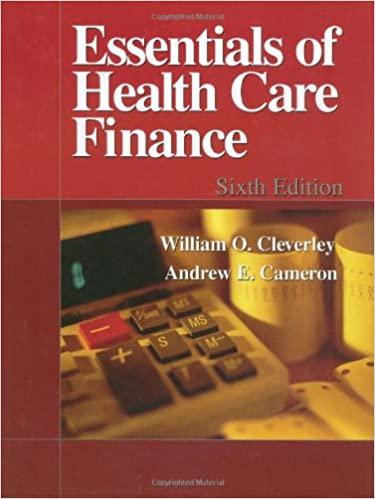





7. The Capital Asset Pricing Model and the security market line Wilson holds a portfolio that invests equally in three stocks (WA = WB = wc = - 1/3). Each stock is described in the following table: Stock Beta Standard Deviation 23% A 0.5 Expected Return 7.5% 12.0% B 1.0 38% 2.0 45% 14.0% An analyst has used market- and firm-specific information to generate expected return estimates for each stock. The analyst's expected return estimates may or may not equal the stocks' required returns. You've also determined that the risk-free rate (TRF ] is 4%, and the market risk premium [RPM ) is 5%. Given this information, use the following graph of the security market line (SML) to plot each stock's beta and expected return on the graph. (Note: Click on the points on the graph to see their coordinates.) ? 20 18 Stock A 16 14 12 Stock B RATE OF RETURN (Percent) 10 8 Stock C 4 2 OA 0.2 0.4 0.6 1.4 1.6 1.8 2.0 0.8 1.0 1.2 RISK (Beta) A stock is in equilibrium if its expected return its required return. In general, assume that markets and stocks are in equilibrium (or fairly valued), but sometimes investors have different opinions about a stock's prospects and may think that a stock is out of equilibrium (either undervalued or overvalued). Based on the analyst's expected return estimates, Stock A is Stock B is and Stock C is in equilibrium and fairly valued. ! Click on the points on the graph to see their coordinates.) ? 20 18 Stock A 18 14 12 Stock B RATE OF RETURN (Percent) 10 Stock C 6 2. 0 is more than 0 0.2 0.4 0.6 2.0 0.8 1.0 1.2 RISK (Beta) is less than equals A stock is in equilibrium if its expected return its required return. In general, assume that markets and stocks are in equilibrium (or fairly valued), but sometimes investors have different opinions about a stock's prospects and may think that a stock is out of equilibrium (either undervalued or overvalued). Based on the analyst's expected return estimates, Stock A is Stock B is Stock C is in equilibrium and fairly valued. , and ? 20 18 Stock A 16 14 12 Stock B RATE OF RETURN (Percent) 10 00 Stock C 4 2 0 0.2 0.4 0.6 1.4 1.6 1.8 2.0 0.8 1.0 1.2 RISK (Beta) in equilibrium undervalued overvalued A stock is in equilibrium if its expected return its required return. In ge (or fairly valued), but sometimes investors have different opinions about a stock's prospec undervalued or overvalued). Based on the analyst's expected return estimates, Stock A is Stock C is in equilibrium and fairly valued. hat markets and stocks are in equilibrium that a stock is out of equilibrium (either Stock B is and 1 2. Measuring stand-alone risk using realized (historical) data Returns earned over a given time period are called realized returns. Historical data on realized returns is often used to estimate future results. Analysts across companies use realized stock returns to estimate the risk of a stock. Consider the case of Falcon Freight Inc. (FF): Five years of realized returns for FF are given in the following table. Remember: 1. While FF was started 40 years ago, its common stock has been publicly traded for the past 25 years. 2. The returns on its equity are calculated as arithmetic returns. 3. The historical returns for FF for 2014 to 2018 are: 2014 2015 2016 2017 2018 Stock return 13.75% 9.35% 16.50% 23.10% 7.15% 0.38 e preceding data, the average realized return on FF's stock is 0.83 of FF's historical returns. Based on this conclusion, the standard deviation of FF's historical Jeding data series represents 0.45 0.52 brs expect the average realized return from 2014 to 2018 on FF's stock to continue into the future, its coefficient of variation (CV) will be ? 20 - 18 Stock A 18 14 Stock B RATE OF RETURN (Percent) Stock C 0 0.2 0.4 0.6 1.4 1.6 1.8 2.0 0.8 1.0 1.2 RISK (Beta) overvalued in equilibrium undervalued lilibrium (either A stock is in equilibrium if its expected return its required return. In general, assume that markets and (or fairly valued), but sometimes investors have different opinions about a stock's prospects and may think that a stock is undervalued or overvalued). Based on the analyst's expected return estimates, Stock A is Stock B is Stock C is in equilibrium and fairly valued. , and












